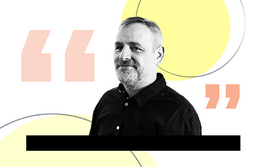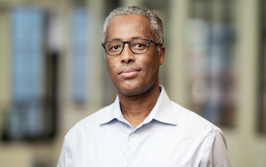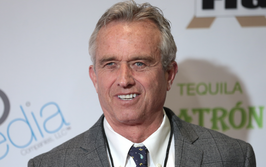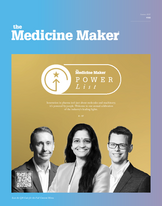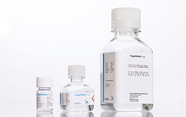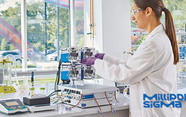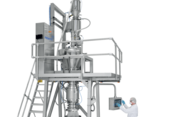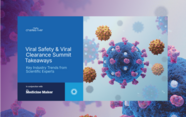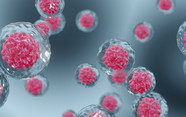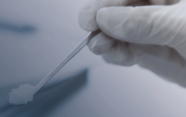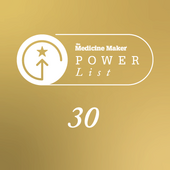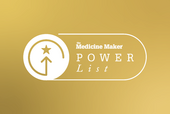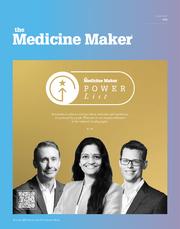Starting a Business in CRISPR
From a love of history books to a love of CRISPR, Monika Paule tells us the story of her career and the origins of Caszyme.
Stephanie Vine | | 8 min read | Interview
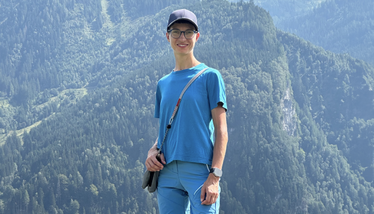
“Both of my parents are biochemists, so science was a very natural conversation. I didn’t even realize until much later that not every family talks about science at parties…”
Based in Lithuania, Monika Paule is the CEO and co-founder of the CRISPR gene-editing company Caszyme. We interviewed her about her career, including her geeky childhood, her move into business, and what may lay ahead for the CRISPR field…
What inspired your interest in science when you were a child?
I was a very geeky child. I didn’t like the fairy tales my parents read to me. I’d always ask them for something more interesting, but they didn’t have a lot of time to read other books to me.
However, I had access to a huge library at my mother’s workplace, so I started reading books there at a very young age. I really loved history books, and I was fortunate that lots of beautiful books were just starting to become available in Lithuania, filled with pictures and explanations about science and history. I think I got into them initially just because I loved books. It wasn’t about the content – I loved the physical books!
Both of my parents are biochemists, so science was a very natural conversation. I didn’t even realize until much later that not every family talks about science at parties. I thought, what else would people talk about at parties, if not science?!
All of that shaped me. Science really is a part of who I am.
How did you become interested in CRISPR?
My path to CRISPR wasn’t straightforward. I chose to study economics. I wasn’t the kind of person who could spend all day in a lab. I had spent quite a bit of time playing in the lab as a kid, so I knew how to use all the equipment! But I knew it just wasn’t for me.
What I wanted was to be in business. After earning my bachelor’s, I went on to do a master’s and eventually a PhD in management. However, I still understood the life sciences world well. In time, I was invited by Vilnius University in Lithuania to establish their technology transfer office from the ground up.
My main client was the Life Sciences Center, and one of the most active researchers was Professor Virginijus Šikšnys, a co-founder at Caszyme. He was doing some incredibly important work around CRISPR discoveries and forming licensing and international collaborations.
How did you get involved with the launch of Caszyme?
The idea for Caszyme originated with one of our current partners and shareholders, Corteva Agriscience. They saw real potential for CRISPR development coming out of Vilnius and thought it would be great to establish a separate company focused more on applied research and collaborations – things that go beyond what a university typically does.
To make that happen, the founding team needed someone with a business background. I was already involved at the time, so they invited me to help shape the whole concept, including how Caszyme should be structured, what the business should look like, and how we should operate.
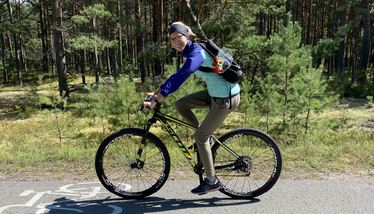
What are the biggest challenges that scientists and companies face today in the CRSIPR field?
I see CRISPR today in a similar position to the dot-com era more than 20 years ago. Back then, we had the dot-com bubble where everyone thought that just having a website would be enough; that the website itself would be your business and make you rich. What we do on the internet now is just using it as a tool and a platform to build real value on top of.
Once the first discoveries around CRISPR came out, it felt like anything involving the technology was going to be huge. There was this idea that if you had a new nuclease, then it alone would make you successful and attract massive investment.
A lot of money did pour into the field, but when you invest heavily without truly understanding the nuances of the technology – such as the advantages, limitations, the fine details of how to make it work – it’s very hard to succeed. CRISPR isn’t easy or straightforward. I think we’re now in a moment where the bubble has burst.
But at the same time, I absolutely believe that CRISPR and gene editing are foundational platform tools. The key now is to figure out how to use them efficiently and in the right contexts – where there are no better alternatives, or where CRISPR offers overwhelming advantages. I think we are now entering a more mature phase for CRISPR, where the industry is reevaluating how to move forward more thoughtfully.
What are some of the more underexplored or emerging applications of CRISPR?
If we look at the full process of CRISPR technology in the context of drug development, I think one of the biggest opportunities is the application of AI. Because we already have this foundation of data and knowledge, we can apply AI in a very effective way. At Caszyme, we’re doing that, and it really does make everything much more efficient.
AI also opens up possibilities for creating new approaches, rather than just optimizing what is already there. At the same time, however, CRISPR is still just a tool. It needs to be combined with other technologies to actually make it work in drug development. One of the biggest challenges for CRISPR is delivery. For a while, there’s been a battle between different delivery technologies, such as AAVs, LNPs, mRNA, RNPs, and so on. But it’s not about picking one winner. It’s about using the right delivery method for the right application.
If we can develop CRISPR-based tools that are compatible with various delivery platforms, then we have a clear path toward applying them in drug development. And when you add in all the recent advancements, such as base editing, prime editing, and other new approaches, it becomes more like assembling Lego blocks. We just need to figure out how to fit the right pieces together in the right way so we can build real therapies based on these technologies.
Are there still people overhyping CRISPR technology? How should we manage expectations?
Even though I’ve talked about the CRISPR bubble, I still believe in this technology. Much of the bubble was created by the world of finance and venture capital. When you pour a lot of money into something, you naturally want the biggest and fastest return possible. This is always a challenge in biotech and life sciences because results just don’t come that quickly.
We also need to manage the expectations of society. Drug development takes time and clinical trials take time. Things can fail for very unexpected reasons, but it's the regulatory process that often costs the most in both time and money. Regulators have become more collaborative in recent years, which is great, but if you go back ten years there was still this attitude of “We don’t know what CRISPR is, or how to even begin to regulate it in a clinical setting.”
What are your realistic hopes for the future of CRISPR in drug development?
I always like to emphasize that CRISPR isn’t just for therapeutics. The technology is also being used very actively in agri-tech and is picking up in food tech. First and foremost, I think we need to look at CRISPR from a much broader perspective.
When you have complementary technologies and real products being developed across different sectors using CRISPR and gene editing, everything starts to accelerate. People can see that it works and R&D knowledge can be very transferable between fields. You can take lessons learned in one area and apply them to another – and sometimes even use the same technologies in different industries. This crossover also allows for R&D synergies. Companies from completely different sectors can collaborate on developing the same CRISPR-based tools and techniques. I want this technology to be used as broadly as possible – because the broader the use, the more it will also advance in the therapeutic space.
Ultimately, if we could recognize and structure R&D around shared foundations, the whole field could move forward more efficiently. Right now, a lot of money is being burned with teams being hired and then let go, and there are massive short-term pushes without long-term results. In my view, consistent, focused, and efficient work is what brings the best outcomes. We don’t always need to go bigger – we need to go smarter.
Why are you so passionate about Lithuania’s expertise in science?
There are people here who’ve spent their entire lives working on specific technologies. Over the years, they’ve accumulated so much knowledge, but I think we are perhaps too humble! I am a member of the board of the Life Sciences Center and we recently discussed that there are so many great things happening there with international researchers coming in and setting up new projects, but we’re not getting the global visibility we deserve.
Of course, there are geopolitical challenges right now that might make the region seem less attractive to some. But in general, I strongly believe that innovation hubs around the world should be seen and recognized. Not everything has to be concentrated in Boston or the Bay Area of the US. There are amazing people doing important work all over the world.
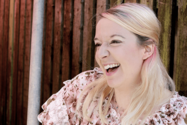
Making great scientific magazines isn’t just about delivering knowledge and high quality content; it’s also about packaging these in the right words to ensure that someone is truly inspired by a topic. My passion is ensuring that our authors’ expertise is presented as a seamless and enjoyable reading experience, whether in print, in digital or on social media. I’ve spent fourteen years writing and editing features for scientific and manufacturing publications, and in making this content engaging and accessible without sacrificing its scientific integrity. There is nothing better than a magazine with great content that feels great to read.


